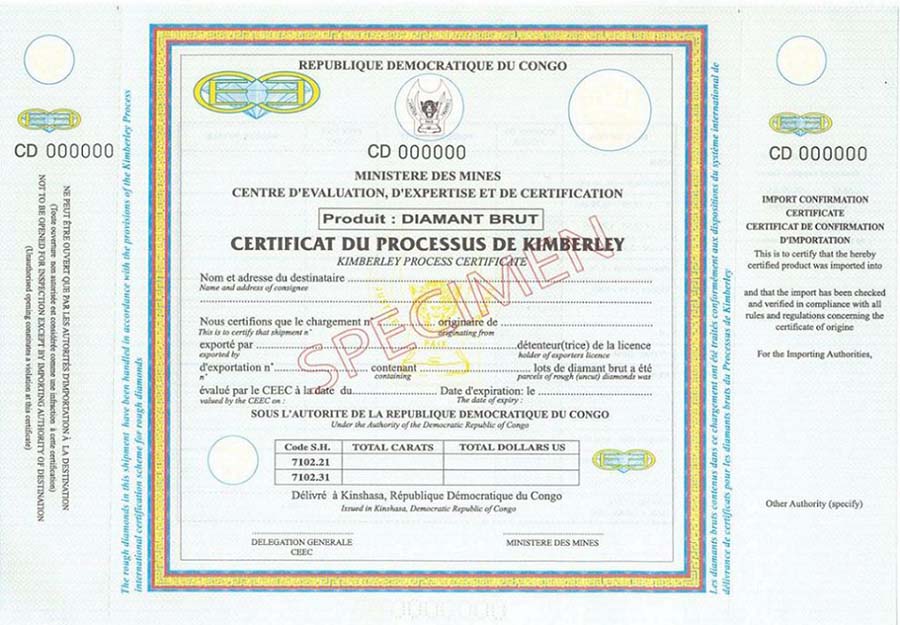The origins of the Kimberley Process date back to May 2000, when the diamond producing countries of southern Africa met in Kimberley, South Africa, to discuss ways to end the trade of "war diamonds" and to ensure that the diamond trade does not finance the activities of violent rebel movements and their allies aimed at destabilizing legitimate governments.
In December 2000, the United Nations General Assembly adopted an historic resolution in favor of the creation of an international certification framework for rough diamonds. In November 2002, negotiations between governments, representatives of the international diamond industry and civil society organizations resulted in the creation of the Kimberley Process Certification Scheme (KPCS). The official document of the certification system defines the conditions for controlling the production and trade of rough diamonds. The Kimberley Process certification system came into effect in 2003, when participating countries began to apply it.
Who participates in the process?
| The Kimberley Process is open to all countries that wish to apply its provisions and are able to do so. Since November 2012, the process has had 54 participants, ie 81 countries, the European Union and its Member States counting as one participant. Participants in the Kimberley Process represent approximately 99.8% of the world's production of rough diamonds. The World Diamond Council, which represents the international diamond industry, as well as civil society organizations such as the Africa Canada Partnership, are also participants in the Kimberley Process and have played a major role in it since its inception. |  |
How the Kimberley Process works?
The Kimberley Process Certification Scheme (SCPK) imposes many conditions on its participants before allowing them to certify that the sale of rough diamonds is not used to finance an armed conflict and to prevent conflict diamonds from arriving on the legal market. Under this certification system, participating States must meet certain "minimum conditions" and are required to put in place national legislation and institutions, as well as export, import and domestic trade controls for diamonds. They must also undertake to ensure the transparency of activities relating to diamonds and to exchange statistical data. Only commercial activities relating to diamonds carried out between participants meeting the minimum conditions of the certification system are lawful. Furthermore, international consignments of rough diamonds must be accompanied by a certificate guaranteeing that they are not used to finance an armed conflict.
The Kimberley Process is chaired in turn by the participating countries. So far it has been from South Africa, Canada, Russia, Botswana, the European Union, India, Namibia, Israel, the Democratic Republic of the Congo and the United States. America and it is currently through South Africa. Representatives of the participating countries and the diamond sector, as well as observers from civil society organizations, meet twice a year, in plenary and intersessional sessions, as well as in periodic meetings of working groups and committees. The implementation of the Kimberley Process Certification System is monitored by "review visits" and annual reports, as well as by the exchange and analysis of statistical data at regular intervals.
The Situation in Congo
The Kimberley process in the Democratic Republic of Congo is ensured by the C.E.E.C which monitors, tests and certifies stones. To track down the authenticity of our Kimberley Process Certificates:
The format

Extension Expired Certificate
The Kimberely Certificate in the Democratic Republic of Congo is issued and remains valid for a period of 1 to 3 months depending on the case. To renew/extend the validity of your certificate follow the link: